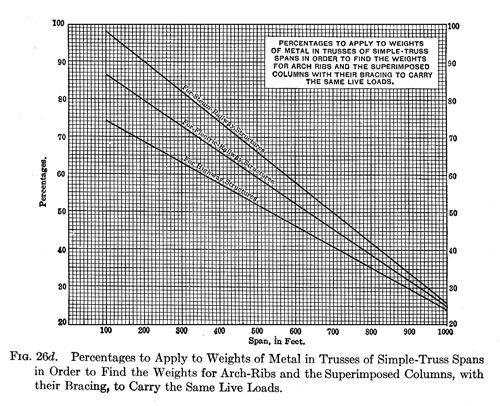| 238 | ECONOMICS OF BRIDGEWORK | Chapter XXVI |
|
Sixth. The combination of three hinges for dead load and two hinges for live load produces very little saving over the three-hinged type; but it adds materially to the rigidity. In the writer's opinion, the combined type is preferable to any of the others. Seventh. When an arch is flanked by other spans than arches, there is generally quite a little economy involved by cantilevering the ends of the arch and shortening the lengths of the simple spans. The best proportions for lengths of cantilever arm and suspended span to total length of flanking span are, respectively, 0.4 and 0.6. Eighth. The ratios of weights of arches to the weights of the corresponding simple spans for both railway and highway bridges have been determined and plotted. As was anticipated, the arch usually effects a greater relative economy in highway structures than in railway structures of the same span length; and the longer the span the greater always is the proportionate saving of metal. The results of this investigation are shown in Fig. 26d.
In concluding his paper, the author quoted as follows from "Bridge Engineering":
In dealing with the comparative economics of arches and simple trusses, it must not be forgotten that there are other factors than mere weight of metal involved; for the pound price of the manufactured material is generally somewhat greater for the former, and sometimes the cost of erection also is larger. Again, the comparison of the costs of arch superstructures and truss superstructures alone is not of much importance, for |
